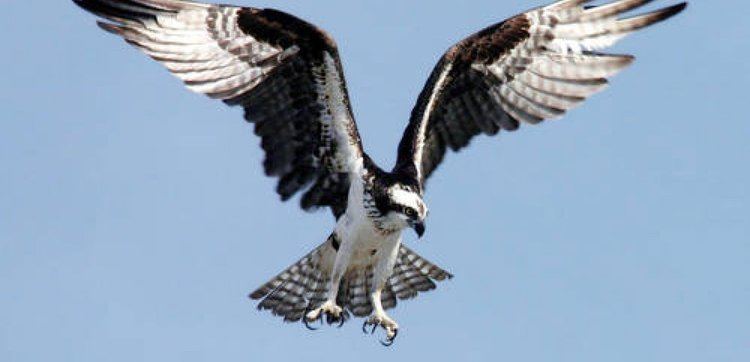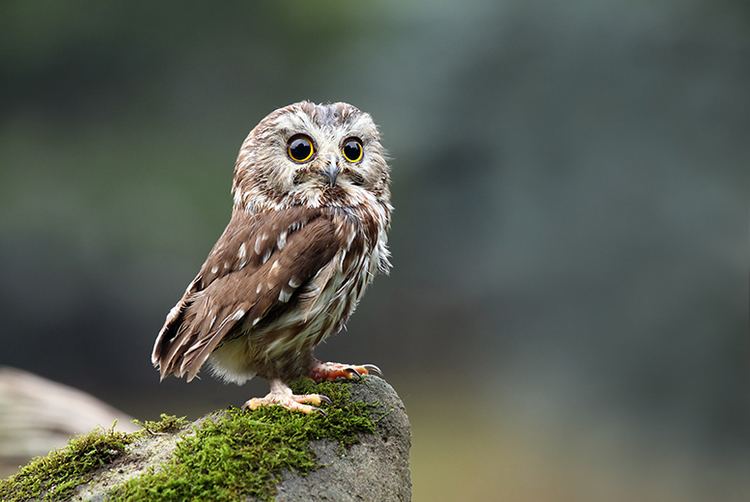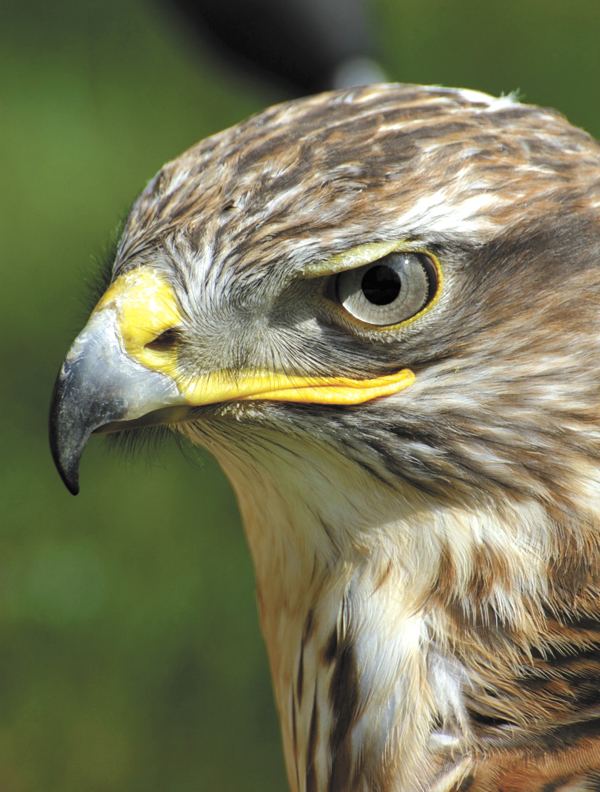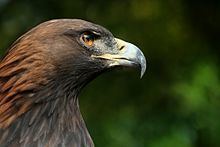Family Several, see text | ||
 | ||
Mass Common buzzard: 0.43 – 1.4 kg Wingspan Common buzzard: 1.1 – 1.4 m Tail length Peregrine falcon: 13 – 19 cm Length Common buzzard: 40 – 58 cm Representative species | ||
Raptor bird of prey bird sounds for kids part 2 children learn birds of prey raptors
Birds of prey, also known as raptors, refer to several species of predatory birds (i.e. birds that hunt and feed on rodents and other small animals). The term "raptor" is derived from the Latin word rapere (meaning to seize or take by force). These birds are characterized by keen vision that allows them to detect rodents during flight and powerful talons and beaks.
Contents
- Raptor bird of prey bird sounds for kids part 2 children learn birds of prey raptors
- Classification
- Historical classifications
- Common names
- Migration
- Sexual dimorphism
- References

Many species of birds may be considered partly or exclusively predatory. However, in ornithology, the term "bird of prey" applies only to birds of the families listed below. Taken literally, the term "bird of prey" has a wide meaning that includes many birds that hunt and feed on animals and also birds that eat very small insects. In ornithology, the definition for "bird of prey" has a narrower meaning: birds that have very good eyesight for finding food, strong feet for holding food, and a strong curved beak for tearing flesh. Most birds of prey also have strong curved talons for catching or killing prey. An example of this difference in definition, the narrower definition excludes storks and gulls, which can eat quite large fish, partly because these birds catch and kill prey entirely with their beaks, and similarly bird-eating skuas, fish-eating penguins, and vertebrate-eating kookaburras are excluded. Birds of prey generally prey on vertebrates, which are usually quite large relative to the size of the bird. Most also eat carrion, at least occasionally, and vultures and condors eat carrion as their main food source.

Classification

The order Accipitriformes is inferred to have originated about 44 million years ago when it split from the common ancestor of the Secretarybird (Sagittarius serpentarius) and the rest of the accipitrid species. The phylogeny of Accipitriformes is complex and difficult to unravel. Widespread paraphylies were observed in many phylogenetic studies. More recent and detailed studies show similar results. However, according to the findings of a 2014 study, the sister relationship between larger clades of Accipitriformes was well supported (e.g. relationship of Harpagus Kites to buzzards and sea Eagles and these latter two with Accipiter hawks are sister taxa of the clade containing Aquilinae and Harpiinae).
The diurnal birds of prey are formally classified into five families of two orders.

These families were traditionally grouped together in a single order Falconiformes, however are now split into two orders: Falconiformes and Accipitriformes. The Cathartidae are sometimes placed separately in an enlarged stork family (Ciconiiformes), and may be raised to an order of their own (Cathartiiformes).
The secretary bird and/or osprey are sometimes listed as subfamilies of Acciptridae: Sagittariinae and Pandioninae, respectively.
Australia's letter-winged kite is a member of the family Accipitridae, although it is a wholly nocturnal bird.
The nocturnal birds of prey – the owls – are classified separately as members of two extant families of the order Strigiformes:
Historical classifications
The taxonomy of Carl Linnaeus grouped birds (class Aves) into orders, genera, and species, with no formal ranks between genus and order. He placed all birds of prey into a single order, Accipitres, subdividing this into four genera: Vultur (vultures), Falco (eagles, hawks, falcons, etc.), Strix (owls), and Lanius (shrikes). This approach was followed by subsequent authors such as Gmelin, Latham, and Turnton.
Louis Pierre Veillot used additional ranks: order, tribe, family, genus, species. Birds of prey (order Accipitres) were divided into diurnal and nocturnal tribes; the owls remained monogeneric (family Ægolii, genus Strix), whilst the diurnal raptors were divided into three families: Vulturini, Gypaëti, and Accipitrini.
Thus Veillot's families were similar to the Linnaean genera, with the difference that shrikes were no longer included amongst the birds of prey. In addition to the original Vultur and Falco (now reduced in scope), Veillot adopted four genera from Savigny: Phene, Haliæetus, Pandion, and Elanus. He also introduced five new genera of vultures (Gypagus, Catharista, Daptrius, Ibycter, Polyborus) and eleven new genera of accipitrines (Aquila, Circaëtus, Circus, Buteo, Milvus, Ictinia, Physeta, Harpia, Spizaëtus, Asturina, Sparvius).
Common names
The common names for various birds of prey are based on structure, but many of the traditional names do not reflect the evolutionary relationships between the groups.
Many of these English language group names originally referred to particular species encountered in Britain. As English-speaking people travelled further, the familiar names were applied to new birds with similar characteristics. Names that have generalised this way include: kite (Milvus milvus), sparrow-hawk or sparhawk (Accipiter nisus), goshawk (Accipiter gentilis), kestrel (Falco tinninculus), hobby (Falco subbuteo), harrier (simplified from "hen-harrier", Circus cyaneus), buzzard (Buteo buteo).
Some names have not generalised, and refer to single species (or groups of closely related (sub)species): merlin (Falco columbarius), osprey (Pandion haliaetus).
Migration
Migratory behaviour evolved multiple times within accipitrid raptors.
The earliest event occurred nearly 14–12 million years ago. This result seems to be one of the oldest dates published so far in the case of birds of prey. For example, a previous reconstruction of migratory behaviour in one Buteo clade with a result of the origin of migration around 5 million years ago was also supported by that study.
Migratory species of raptors had a southern origin because it seems that all of the major lineages within Accipitridae had an origin to one of the biogeographic realms of the Southern Hemisphere. The appearance of migratory behaviour occurred in the tropics parallel with the range expansion of migratory species to temperate habitats. Similar results of southern origin in other taxonomic groups can be found in the literature.
Distribution and biogeographic history highly determine the origin of migration in birds of prey. Based on some comparative analyses, diet breadth also has an effect on the evolution of migratory behaviour in this group, but its relevance needs further investigation. The evolution of migration in animals seems to be a complex and difficult topic with many unanswered questions.
A recent study discovered new connections between migration and the ecology, life history of raptors. A brief overview from abstract of the publish paper shows that "clutch size and hunting strategies have been proved to be the most important variables in shaping distribution areas, and also the geographic dissimilarities may mask important relationships between life history traits and migratory behaviours. The West Palearctic-Afrotropical and the North-South American migratory systems are fundamentally different from the East Palearctic-Indomalayan system, owing to the presence versus absence of ecological barriers." Maximum entropy modelling can help in answering the question: why species winters at one location while the others are elswhere. It is interesting that how temperature and precipitation related factors differs in the limitation of species distributions. "This suggests that the migratory behaviours differ among the three main migratory routes for these species" which may have important consevational consequences in the protection of migratory raptors.
Sexual dimorphism
Raptors are known to display patterns of sexual dimorphism. It is commonly believed that the dimorphisms found in raptors occur due to sexual selection or environmental factors. In general, hypotheses in favor of ecological factors being the cause for sexual dimorphism in raptors are rejected. This is due to the fact that the ecological model is less parsimonious, meaning that its explanation is more complex than that of the sexual selection model. Additionally, ecological models are much harder to test for due to the fact that a great deal of data is required.
Dimorphisms can also be the product of intrasexual selection between males and females. It appears that both genders of the species play a role in the sexual dimorphism within raptors; females tend to compete with other females to find good places to nest and attract males, and males competing with other males for adequate hunting ground so they appear as the most healthy mate. It has also been proposed that sexual dimorphism is merely the product of disruptive selection, and is merely a stepping stone in the process of speciation, especially if the traits that define gender are independent across a species. Sexual dimorphism can be viewed as something that can accelerate the rate of speciation.
In non-predatory birds, males are typically larger than females. However, in birds of prey, the opposite is the case. For instance, take into account the kestrel, a type of falcon in which males are the primary providers, and the females are responsible for nurturing the young. In this species, the smaller kestrels are, the less food is needed and thus, they can survive in environments that are harsher. This is particularly true in the male kestrels. It has become more energetically favorable for male kestrels to remain smaller than their female counterparts because of the fact that smaller males have an agility advantage when it comes to defending the nest and hunting. Larger females are favored because they can incubate larger numbers of offspring, while also being able to breed a larger clutch size.
